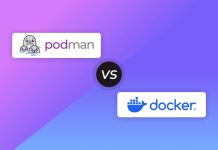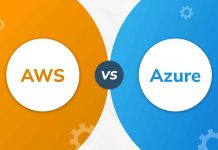
To take the world of quick software deployment to a safe and secure place, it’s time to move away from the DevOps SDLC and choose the DevSecOps life cycle.
Several years ago, developers worked exclusively under the waterfall software development life cycle. Under this method, deployment would take place every 1-2 months, and vast, monolithic applications were deployed over the weekend. The security team would get involved in the production-monitoring view, and would conduct tests on the application after it has been deployed. Not only did this cause major issues to the customers, the organizations had to bear heavy costs if there were any security breaches were found.
Streamlining Development Through The DevOps SDLC
With the selection of more innovative and more active development life cycles, the situation has evolved. Monolithic software has been split down into microservices and containers, and clouds are displacing traditional environments. Automation has been effective in increasing the speed of deployment, along with streamlining the whole method. The development and the operations functions have been consolidated into a DevOps capacity. Boundaries between various development and operational teams have been disappearing to make DevOps a star. Anyone who has moved from a waterfall SDLC to a modified agile or DevOps SDLC will also inform you that it requires a massive shift in mindset. Without a massive cultural change, it is difficult for DevOps to succeed.
Where Does Security Apply Into The DevOps SDLC?
The one aspect that DevOps lacks is security. Even though the DevOps SDLC guarantees stable, quicker throughput, the applications themselves may not be secure. DevOps practitioners claim that traditional security slows them down. But the risk is that security teams go blowing from a qualified agile or DevOps SDLC if they don’t jump on board this fast-moving train. And this is where the DevSecOps life cycle evolves into the picture.
Embracing The DevSecOps Life Cycle
Security is not only the SSG’s responsibility. It is everyone’s duty. Building security at the beginning from the product plan decreases remediation time while making the product more reliable, reducing costs in the long run. Instead of estimating how long it takes for the pipeline to develop, quality-test, and deploy software, DevOps organizations must rise, measuring the baseline with security exercises included in the overall pipeline.
How To Shift From DevOps to DevSecOps
Now that we have an understanding of what each of the two methodologies is, let’s delve a little deeper into the development of these models.
To explain DevSecOps, it would be a cultural exchange within development teams, which seem to security in all phases of development.
Thus, it would allow the team to recognize vulnerabilities or even the chance of a vulnerability in the early steps of development.
If we think of this idea as the starting point of a revolution, it is necessary to examine building automated DevSecOps means with a very severe security mindset by the developer.
The great difficulty is to begin a drastic change in creating into the development process. It is essential to give everyone interested in the open message that security is one of the most significant elements of application development, and it must be created to enable the necessary checks.
At this point, you may be questioning yourself, “okay, but how do I achieve DevSecOps in my process?”
We realize that when asking this puzzle, the organization already has a DevOps structure with a significant degree of development, and its teams already understand that the change needs to come from within the process.
Managing microservices and containers when shifting from DevOps to DevSecOps
in a business where we see applications developed by microservices and containers, it’s difficult to not discuss them.
We need to see that while knowing that there are significant benefits to using microservices and containers, they also bring us different tests.
We can’t overlook that the generation of these features in a structure, and the facility in which they can be built, also increases the drive surface, and thus the risks.
With this in thought, it is fundamental that one of the advice is to guarantee that these new settings and containers are made into the validation process as much as the codes.
Finally, when considering microservice and container security, it is essential to maintain that an orderly and defined hardening process must be implemented.
This security validation process should forever be followed by constant monitoring to guarantee that any exceptions are recognized.
Moving from DevOps to DevSecOps: A Constant Evolution
It’s essential to emphasize that this is a constant-evolving process, that adheres to changes quicker each time.
Therefore, in this article, we are studying at communicating the vision that is required to assess and to seek for constant changes of processes, searching to guarantee that results are safer each time.
Quality metrics must cover application security metrics, and quality tests must include security searches. The DevSecOps life cycle makes this more accessible to enforce once developers and operations start maintaining the security of their software, conflict between all these teams drops.
As in any similar relationship, the give-and-take is crucial to create a DevSecOps life cycle:
the security team must allow developers to secure their software by giving security pieces of training, nurturing Security Champions within the company, and automating security tools for measuring, ultimately installing application security into the existing pipelines. Security teams must use the development processes and technologies needed to guarantee a tight alliance. They must respect deployment rates and modify their operations and actions accordingly.
Conversely, the development organization needs to own the security of their applications with the security team. They need to understand that deploying an insecure application to production is no longer an alternative.
DevOps teams must understand that security is not something hit onto a product during or after deployment. Instead, it is a mixture of different projects that blend into the SDLC right from the analysis period. Security must be built into the product.
Finally, it is time to leave the DevOps SDLC and choose a DevSecOps life cycle to get the world of rapid software deployment a more reliable place.
To know more about the DevSecOps and how to conduct a seamless transition from DevOps to DevSecOps, you can enrol to our advanced DevOps certification courses!














